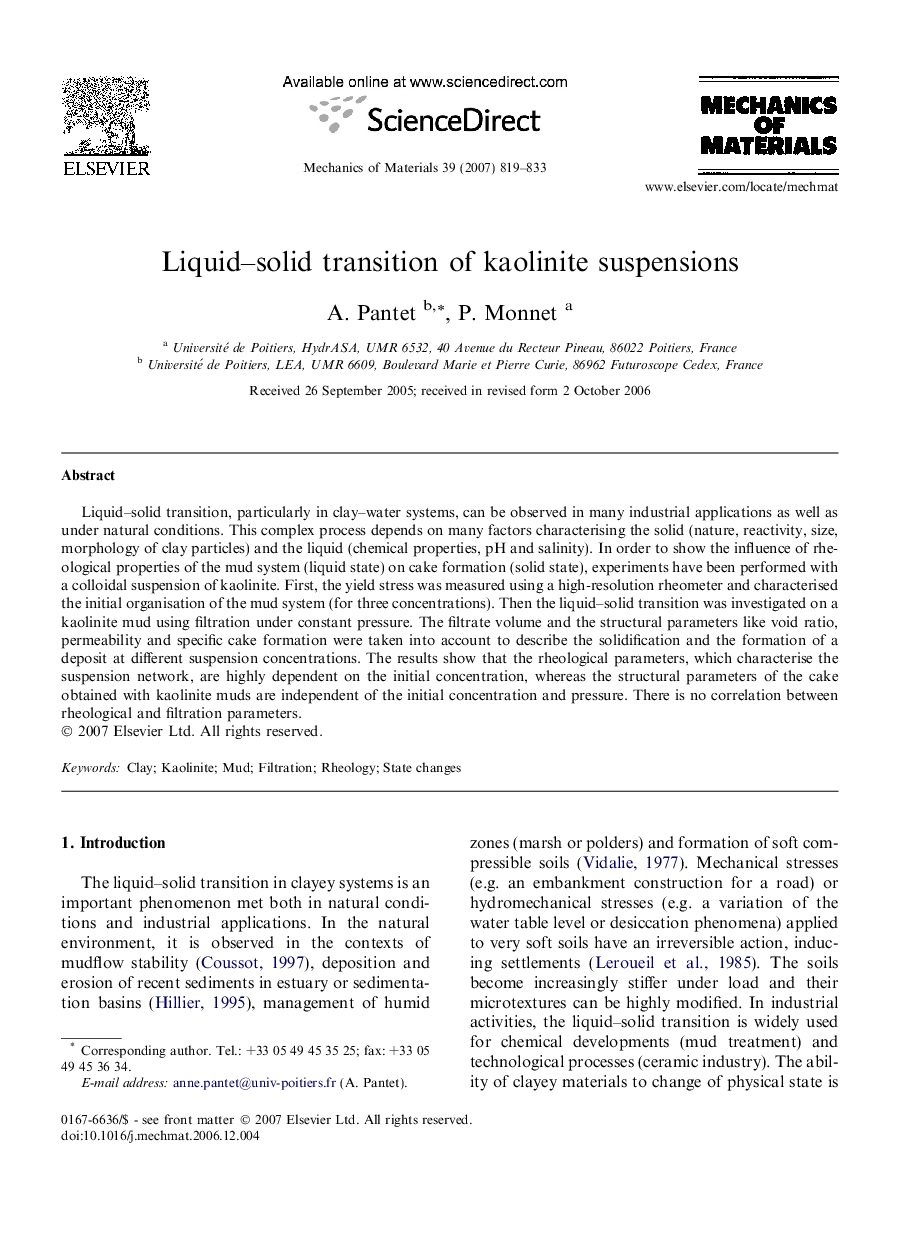| Article ID | Journal | Published Year | Pages | File Type |
|---|---|---|---|---|
| 800617 | Mechanics of Materials | 2007 | 15 Pages |
Liquid–solid transition, particularly in clay–water systems, can be observed in many industrial applications as well as under natural conditions. This complex process depends on many factors characterising the solid (nature, reactivity, size, morphology of clay particles) and the liquid (chemical properties, pH and salinity). In order to show the influence of rheological properties of the mud system (liquid state) on cake formation (solid state), experiments have been performed with a colloidal suspension of kaolinite. First, the yield stress was measured using a high-resolution rheometer and characterised the initial organisation of the mud system (for three concentrations). Then the liquid–solid transition was investigated on a kaolinite mud using filtration under constant pressure. The filtrate volume and the structural parameters like void ratio, permeability and specific cake formation were taken into account to describe the solidification and the formation of a deposit at different suspension concentrations. The results show that the rheological parameters, which characterise the suspension network, are highly dependent on the initial concentration, whereas the structural parameters of the cake obtained with kaolinite muds are independent of the initial concentration and pressure. There is no correlation between rheological and filtration parameters.
